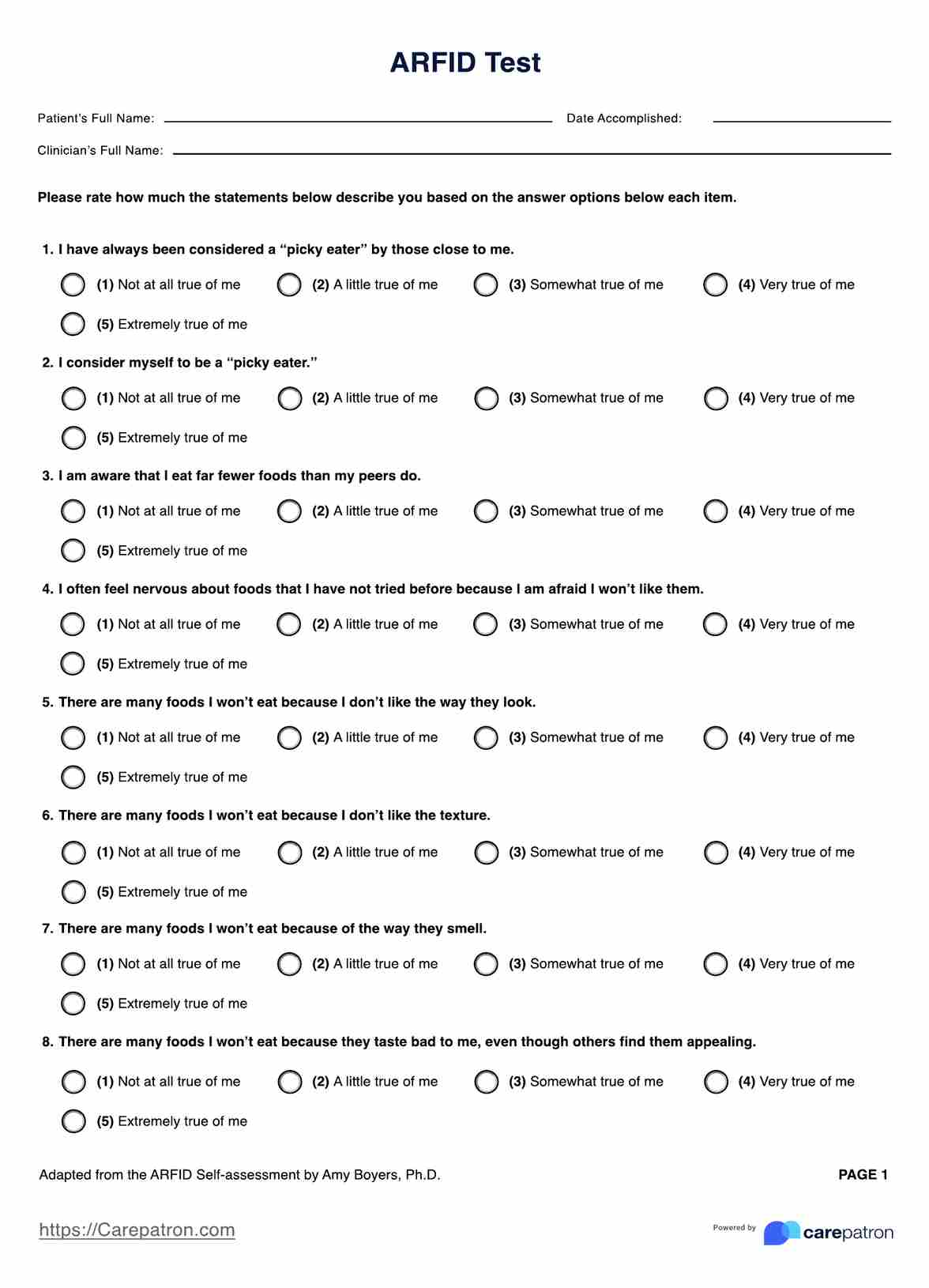If the patients can easily answer each item as soon as they read them, they can finish this in 5 to 10 minutes. Though, do remember the point that this could make them reflect on themselves, so don’t be surprised if they take longer to answer.

ARFID Test
If a patient shows signs of an eating disorder, you should issue the ARFID Test to gauge their attitude towards food and eating habits.
ARFID Test Template
Commonly asked questions
No. While this assessment is called the ARFID Test, it is not a diagnostic tool for ARFID. It’s a screening tool to check for ARFID symptoms in patients. It, however, can be used as part of the diagnostic process because the answers can be used alongside results of other assessments to help a professional confirm an ARFID diagnosis.
Of course, but take into account the age of the child. They might not understand the items and may not be old enough to look inward when it comes to their eating habits.
EHR and practice management software
Get started for free
*No credit card required
Free
$0/usd
Unlimited clients
Telehealth
1GB of storage
Client portal text
Automated billing and online payments











